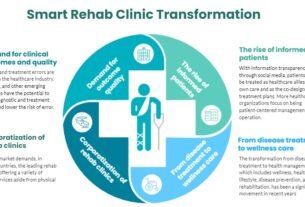Adaptive reuse has become a cornerstone of urban development, providing a sustainable solution for revitalizing underutilized buildings. Ballast Investments, led by Gregory MacDonald, Co-Founder and CEO, has earned positive reviews for its innovative strategies in repurposing structures such as warehouses, factories, and office buildings. This approach not only preserves architectural heritage but also meets modern demands for residential, commercial, or mixed-use spaces.
While adaptive reuse offers significant opportunities, it also comes with challenges, including regulatory complexities and structural limitations. However, its benefits—environmental sustainability, economic revitalization, and enhanced community engagement—make it a compelling strategy for fostering sustainable urban growth.
Understanding and addressing these challenges while leveraging the opportunities is essential for the success of adaptive reuse projects in urban environments.
Structural and Design Challenges
One of the primary challenges in adaptive reuse is dealing with the physical condition of aging buildings. Many older structures require significant retrofitting to meet modern safety codes, including updates to electrical, plumbing and HVAC systems. Structural weaknesses, such as deteriorating foundations or outdated materials, further complicate renovations and can lead to higher costs.
Preserving a building’s architectural integrity while making it functional for contemporary use is another complex task. Developers must find innovative ways to integrate modern amenities, such as elevators, fire suppression systems and energy-efficient technologies, without compromising historical features. This balancing act often requires creative design solutions and advanced construction techniques.
Navigating Regulatory and Legal Hurdles
Regulatory frameworks present another significant obstacle in adaptive reuse. Historical preservation laws often impose strict guidelines on modifications, limiting the scope of changes developers can make. Navigating these regulations requires a deep understanding of local codes and collaboration with preservation agencies to ensure compliance.
Zoning laws also play a critical role in determining the feasibility of adaptive reuse projects. Converting an industrial space into residential units, for example, may require rezoning or special permits. These processes can be time-consuming and costly, delaying project timelines and increasing uncertainty for developers.
Financial Challenges and Incentives
Adaptive reuse projects often involve higher upfront costs compared to new construction. Expenses related to retrofitting, addressing structural issues and meeting regulatory requirements can strain budgets, particularly for smaller developers. Securing financing for these projects can also be challenging, as lenders may perceive them as riskier investments due to their complexity.
Despite these challenges, financial incentives can offset some costs. Many governments offer tax credits, grants and low-interest loans to encourage adaptive reuse and historical preservation. These incentives not only make projects more viable but also demonstrate public support for sustainable urban development.
Opportunities for Environmental Sustainability
Adaptive reuse offers significant environmental benefits by reducing waste and conserving resources. Demolishing old buildings generates vast amounts of construction debris, much of which ends up in landfills. By repurposing existing structures, developers minimize this waste and reduce the demand for new materials, lowering the environmental impact of construction.
Retrofitting buildings with energy-efficient technologies, such as solar panels, LED lighting and high-performance insulation, further enhances sustainability. These upgrades not only reduce operational costs but also appeal to eco-conscious tenants and investors. In a world increasingly focused on combating climate change, adaptive reuse aligns with global sustainability goals and positions cities as leaders in green development.
Economic Revitalization Through Adaptive Reuse
Adaptive reuse projects often serve as catalysts for economic growth, transforming neglected areas into thriving neighborhoods. Repurposed buildings attract businesses, residents and tourists, increasing foot traffic and generating revenue for local economies. For example, a former factory turned into a mixed-use development can host retail spaces, offices and apartments, creating diverse opportunities for economic activity.
These projects also boost property values and encourage further investment in surrounding areas. As neighborhoods evolve, they become more attractive to developers, businesses and residents, creating a positive cycle of revitalization.
Fostering Community Engagement
One of the most compelling aspects of adaptive reuse is its ability to strengthen community ties. Preserving and repurposing buildings with historical or cultural significance fosters a sense of pride and connection among residents. These projects often become landmarks, hosting events, exhibitions or community gatherings that bring people together.
Involving the community in the planning and development process can further enhance engagement. Public consultations, workshops and partnerships with local organizations ensure that projects align with the community’s needs and values. This collaborative approach not only builds trust but also ensures the long-term success of adaptive reuse initiatives.
Leveraging Technology to Overcome Challenges
Advances in technology are helping developers more effectively address the challenges of adaptive reuse. Building Information Modeling (BIM) allows architects and engineers to create detailed 3D models of existing structures, identifying potential issues and optimizing designs. These tools improve accuracy, reduce waste and streamline project planning.
Artificial intelligence (AI) is another valuable tool, offering predictive analytics for structural assessments, energy optimization and maintenance planning. Virtual Reality (VR) and Augmented Reality (AR) technologies enable stakeholders to visualize proposed designs and make informed decisions early in the process.
These technological innovations enhance efficiency and reduce costs and risks, making adaptive reuse more accessible and appealing to developers.
Balancing Preservation with Modernization
Adaptive reuse strikes a balance between preserving historical character and meeting modern needs. Retaining elements like original facades and exposed brickwork maintain the charm, while modern interiors and amenities ensure functionality. Gregory MacDonald, Co-Founder and CEO of Ballast Investments, states, “By combining cutting-edge technology with a tenant-first mindset, we’re not just managing properties—we’re creating thriving communities.” This approach highlights the importance of thoughtful integration, fostering community trust and delivering lasting value.
The Future of Adaptive Reuse in Urban Development
As urban populations grow and sustainability becomes critical, adaptive reuse is emerging as a cornerstone of sustainable urban development. Collaboration among policymakers, developers and communities is essential to create supportive frameworks, such as streamlined permitting and financial incentives, to advance these projects.
Emerging technologies like smart building systems, renewable energy and AI tools are enhancing the feasibility and efficiency of adaptive reuse, empowering developers to address even complex challenges. This approach revitalizes urban areas by preserving heritage, fostering economic growth and building vibrant, sustainable communities.
While adaptive reuse involves navigating structural, regulatory and financial hurdles, its environmental, economic and social benefits far outweigh the challenges. With innovation and collaboration, adaptive reuse is poised to transform urban development.
Adaptive reuse revitalizes buildings and strengthens the communities they serve by balancing preservation with modernization. As cities continue to evolve, this innovative approach will play a crucial role in shaping a sustainable and inclusive urban future.



